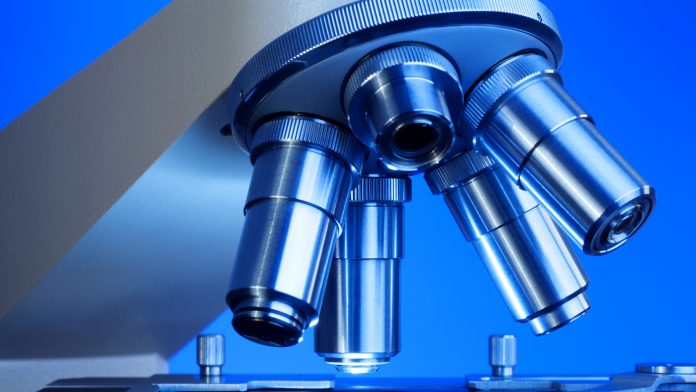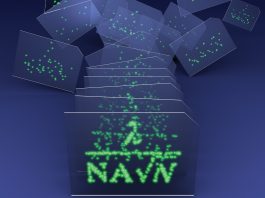The resolution capacity of ordinary light microscopes has been greatly advanced by the invention of a novel light-shrinking material.
The material, developed by electrical engineers from the University of California San Diego enhances the capabilities of standard light microscopes, enabling them to examine living cells in finer detail than ever before. The research can be found in Nature Communications.
This neoteric technology modifies common light microscopes into super-resolution-microscopes – achieving this by shortening the wavelength of light as it hits the sample – with these effects caused by the specially engineered material allowing the microscope to produce higher-resolution imaging.
Zhaowei Liu, a professor of electrical and computer engineering at the University of California San Diego, said: “This material converts low-resolution light to high-resolution light. It’s very simple and easy to use. Just place a sample on the material, then put the whole thing under a normal microscope; no fancy modification needed.”
Light microscopes are employed to examine live cells; however, until now, they were not capable of imaging anything smaller as their resolution limit is 200 nanometres. Although much more powerful technologies such as electron microscopes are proficient in viewing subcellular structures, the problem is that they are unable to image living cells as they need to be encased inside a vacuum chamber.
Liu said: “The major challenge is finding one technology that has a very high resolution and is also safe for live cells.”
The new material bypasses this obstacle by comprising both features, in addition to a light microscope able to image live subcellular structures, possessing a resolution of up to 40 nanometres. The technology works by employing a microscope slide coated in a hyperbolic metamaterial; as the light radiates through, the wavelengths are minimised and scatter to produce various high-resolution speckled patterns. When samples are placed on the slide, the speckled patterns illuminate it, subsequently creating low-resolution images, which are then transformed into high-resolution images via a reconstruction algorithm.
To examine the aptitude of the material, the team utilised it with a commercial inverted microscope; here, they successfully imaged fine features that the microscope itself would not be able to, such as actin filaments, in fluorescently labelled Cos-7 cells. Furthermore, the material successfully distinguished quantum dots and minuscule fluorescent beads that were situated 40 to 80 nanometres apart.
With its potential for high-speed operation, the team are now aiming to evolve their technology to incorporate high-speed, super-resolution, and low phototoxicity in a singular system for live-cell imaging.









